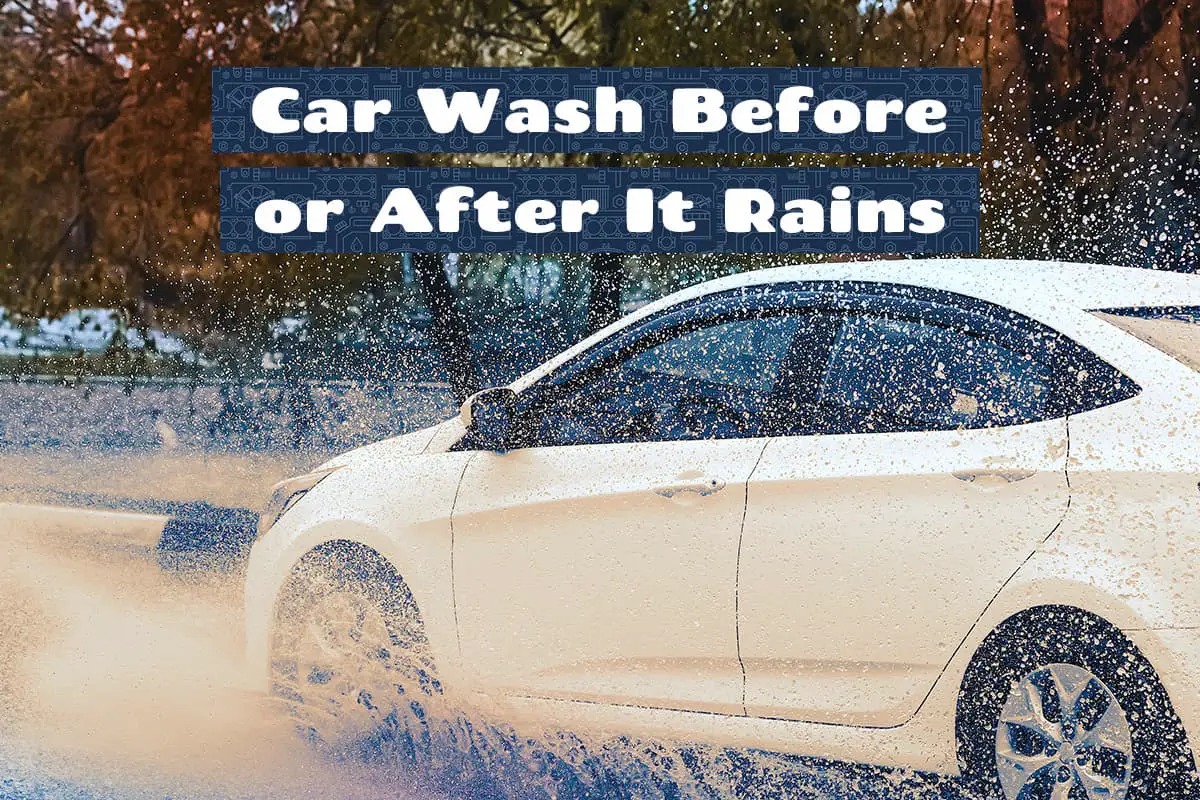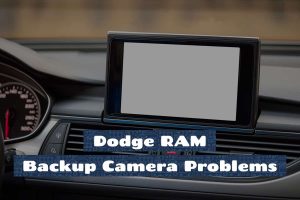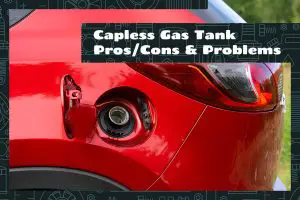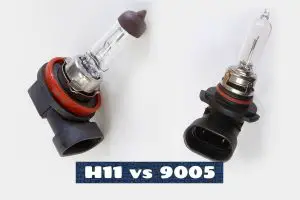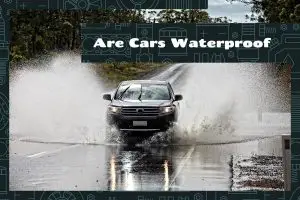Washing your car is a regular part of maintenance, but there’s one thing car owners dread the most—rain. So, if your local meteorologist predicts heavy rainfall later in the day, you should probably delay washing your car. Or should you?
Washing your car before it rains can be an acceptable practice if you apply wax, which repels rainwater. If you don’t want to use wax on your car, you should let the rain pass before washing your car.
In this guide, we’ll explore the pros and cons of washing your car before or after rain, and we’ll even discuss the question you may have been wondering to yourself: whether the rain will wash your car (and your troubles) away.
Washing Your Car Before Rain
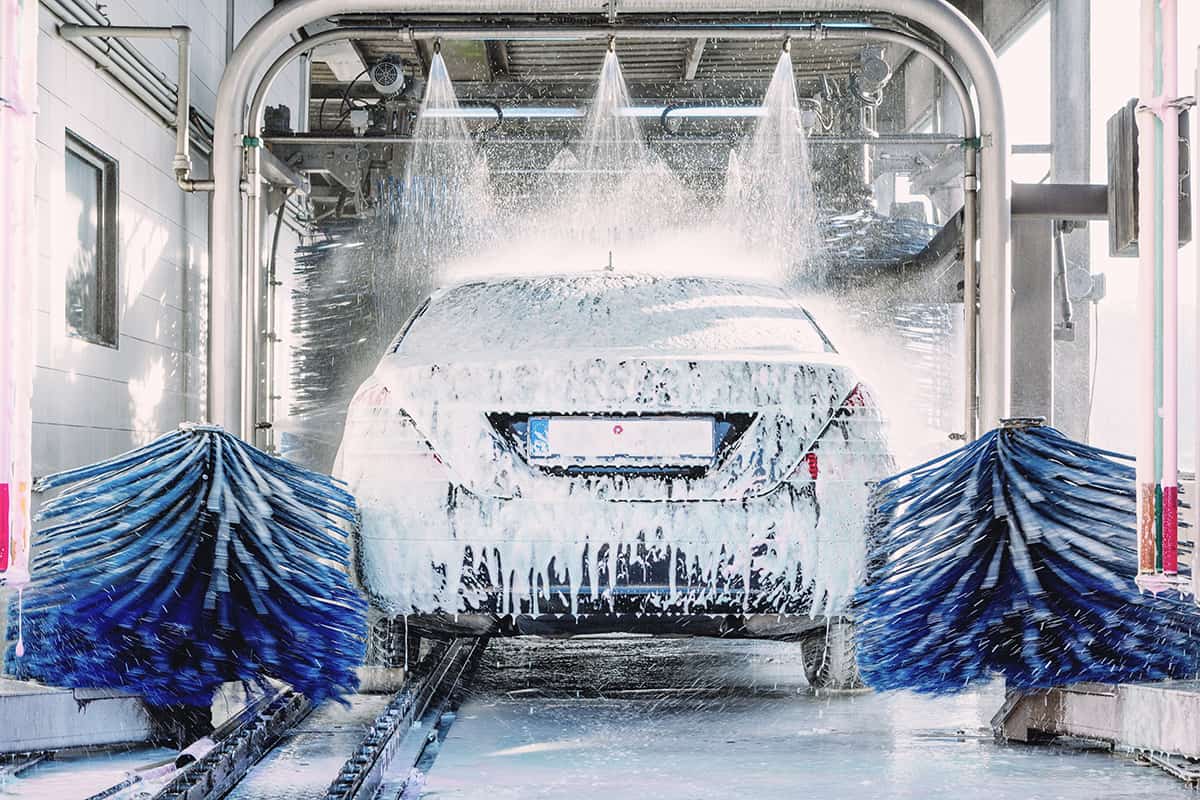
Believe it or not, there are compelling arguments for why you should wash your car before it rain. Let’s see what those arguments are on both sides.
The Benefits of a Pre-Rain Car Wash
Preventing Accumulated Dirt
Dirt and grime on the car’s surface can combine with rainwater, leading to stubborn stains and deposits. Washing your car before the rain hits helps in removing these contaminants.
A pre-rain car wash helps rainwater glide off the smooth surface, carrying away dirt particles without letting them settle. This contributes to a cleaner car appearance, even after the rain has passed.
Enhancing the Wax’s Effectiveness
Applying a quality wax after a wash can be time-consuming, but it’s more than worth the effort. This wax forms a protective layer that shields the paint from harmful elements. Washing and waxing before it rains reinforces this protection.
Rainwater, which may contain pollutants, will bead up on the waxed surface and minimize potential harm. The car wax acts as a barrier, ensuring that the rainwater won’t penetrate the paint and cause damage.
Potential Drawbacks of Washing Before Rain
Water Spotting
Rainwater may contain minerals that leave spots on the car’s surface as they dry. If you wash your car too close to the rain event, these spots might remain, leading to an uneven appearance.
Wasted Time
If the rain is heavy and filled with contaminants, it might undo your hard work, leaving the car dirty once again. All the time you put into washing your car (not to mention the soap and electricity to power your pressure washer) will be all for naught.
Washing Your Car After Rain
Washing your car after heavy rainfall may seem like the more common-sense option. But just like washing your car before it rains, there are two sides to this option.
The Benefits of a Post-Rain Car Wash
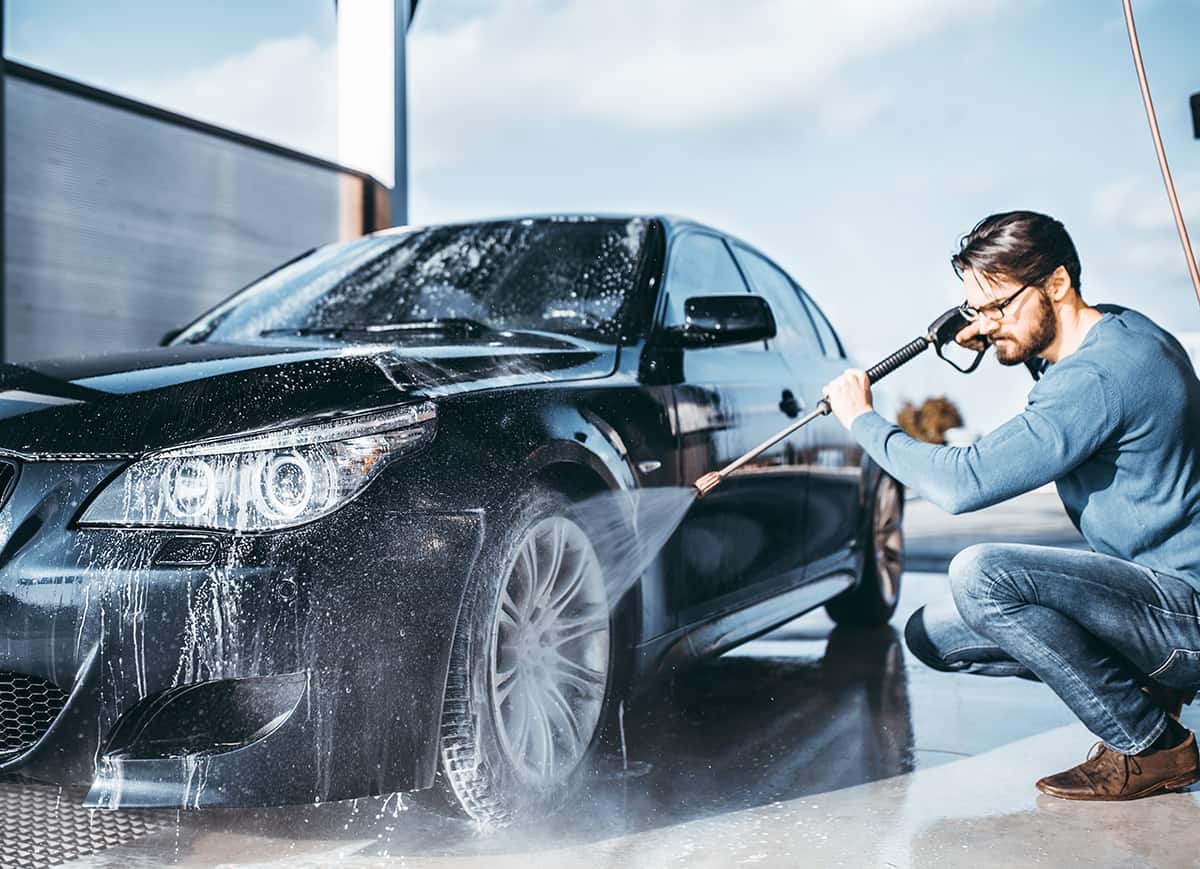
Removal of Rain-Induced Contaminants
Earlier, we talked about how rainwater collects airborne contaminants before crashing onto your car’s surface. But there’s another rain-related issue worth mentioning: acid rain. It contains chemicals that can corrode the paint and reduce its shine. Washing your car after rain helps remove these contaminants promptly, preventing potential damage.
Enhanced Shine and Protection
Post-rain washing allows you to restore your car’s shine and beauty. When you use the right cleaning products, you can enhance the paint’s gloss to make your vehicle look its best. Applying a protective wax layer after washing can prolong the paint’s life, as well as prevent splotches during future rainfall episodes.
Potential Drawbacks of Washing After Rain
Potential Paint Damage
The rain might leave behind pollutants that can scratch the paint if not handled with care. The workaround is to perform a touchless wash (more on this later).
Tips for Washing Your Car
Washing your car is a part of maintaining your vehicle’s appearance and functionality. Whether you’re washing your car before or after rain, there are certain tips and techniques that can make the process more effective and enjoyable
1. Do a touchless wash before anything else
A touchless wash basically means washing your car in water without soap or applying pressure with a microfiber cloth. The goal is to blast all debris off the surface of your car that would otherwise get trapped in your cloth and lead to scratches.
2. No sponges!
Sponges might sound like a good idea since they soak up a ton of water and soap, but you shouldn’t use them on your car. If any solid debris gets trapped in the sponge, it increases the chance of penetrating the clear coat finish and scratching the paint. Use a microfiber cloth instead.
3. Get a pressure washer
Serious car owners will have a pressure washer lying around, but if you don’t, consider investing in one. These things deliver serious pressure that blasts nearly all surface debris off your car. Also, read the instructions before choosing which quick-connect nozzle to attach to the lance. Another tip: do not use the 0° nozzle on your car!
4. Keep two buckets on hand
Fill the first bucket with soapy water and the second with clean water. Whenever you want to re-soap your microfiber cloth, give it a thorough rinse in the clean-water bucket. Make sure you empty the clear-water bucket constantly so that you don’t reintroduce debris onto your microfiber cloth.
5. Wash in sections
This means focusing on a particular panel or portion of your car before moving onto the next. For instance, wash the hood of your car and make sure it’s thoroughly cleaned before moving onto the side panels.
Can You Wash Your Car in the Rain?
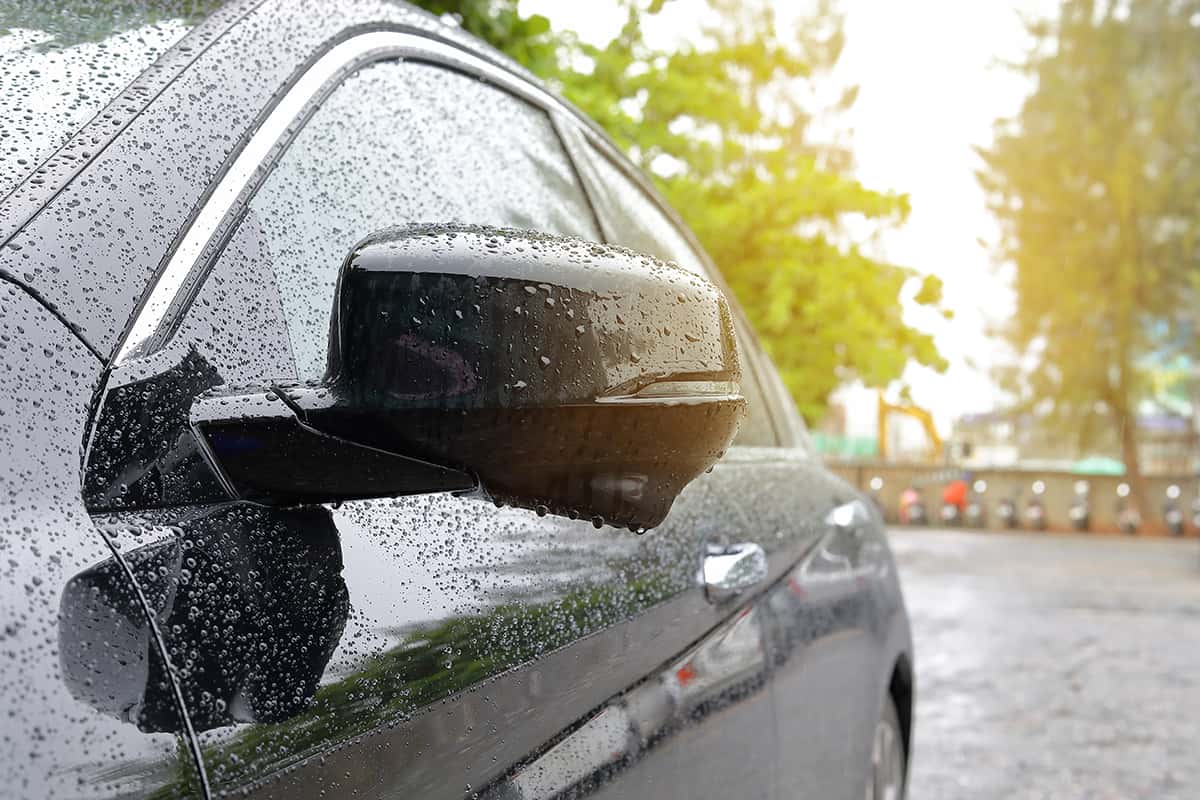
You may have heard that using rainwater to wash your car is an environmentally-friendlier way of keeping your car clean. However, if you read this guide from the beginning, you’ll understand this is not always the case.
Since rainwater collects airborne particles before colliding into your car, those particles will remain on your car’s surface long after the rain has dried. This will leave your car looking splotchy and less appealing than it did before it rained. There’s also the problem with acid rain, which should never be used as your sole source of water for washing your car or anything.
The only semi-exception to this rule is if you’ve already applied a coat of wax onto your car. If you did it correctly, the rain droplets should have beaded right off your car without impacting its glossiness in any way. That said, you should still probably rinse your car after it rains, just to be on the safe side.
FAQs
1. How can I minimize water spots if I wash my car before rain?
Firstly, consider using a soft water source or a water filter to reduce mineral content, as hard water can lead to water spots.
Secondly, washing in the shade or on a cloudy day prevents the soap and water from drying too quickly on the surface.
Utilize a proper drying technique by using a chamois or microfiber drying towel, which absorbs water efficiently without leaving streaks.
Finally, applying a quick spray wax or a water spot remover specifically designed for automotive use can help eliminate any remaining spots and give your car a polished look.
2. What type of weather is best for car washing?
The best weather for washing a car is typically overcast or cloudy conditions. Direct sunlight can cause the water and soap to evaporate quickly, leading to water spots and streaks on the car’s surface. Washing in direct sunlight may also make the soap dry too fast, which could lead to residue on the paint.
Opting to wash your car on a cloudy day or in the shade minimizes these risks. The temperature should also be moderate; extremely hot or cold temperatures might pose challenges in washing. Avoid washing during windy conditions, as dust and debris can settle on the wet surface, possibly scratching the paint.
